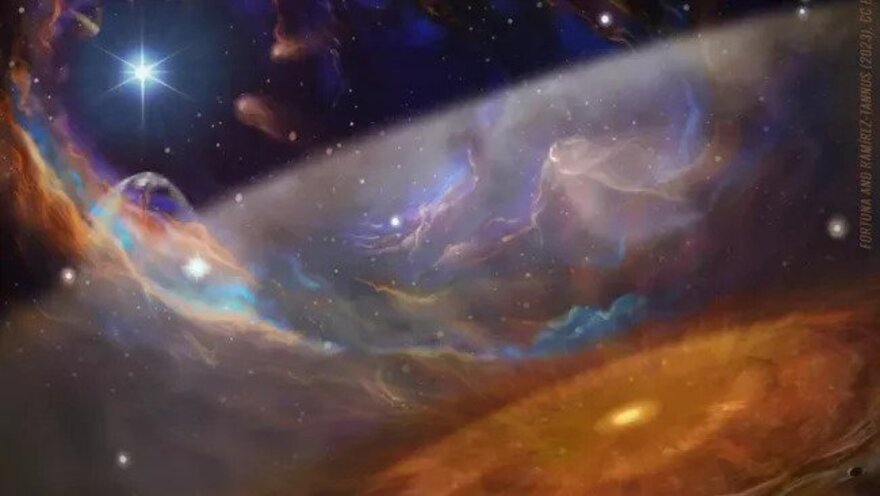Scientists have directed the James Webb Space Telescope at the nebula, which is one of the most extreme “star cradles”. There are many young and hot stars here, so the space is permeated with harsh ultraviolet radiation.

Lobster Nebula
Scientists who work with the James Webb Telescope directed it to the NGC 6357 nebula and found gas-dust disks there. Planets similar to Earth may form from them in the future. This cloud of interstellar gas is located at a distance of 5.5 thousand light-years from us and resembles some kind of fantastic insect. Because of this, it was named Lobster.
And the NGC 6357 nebula is one of the most notable “star cradles”. At the same time, the luminaries that are born here from gas concentrations are quite unusual. They are mostly large and hot and create a large amount of harsh ultraviolet radiation.
Because of this, the entire space of the nebula is literally permeated with energy, and researchers doubted whether radiation would destroy all molecules, as a result of which the formation of planetary systems would be impossible. But James Webb could find protoplanetary disks there.
Earth-like planets can form under extreme conditions
Protoplanetary disks are formed from dust and gas that orbit newborn luminaries. Over time, clumps begin to form in them, which are called planetesimals, and then the planets are formed, which purify everything around them from gas and dust.
In this case, scientists are interested in the protoplanetary disk XUE-1. It formed around a sun-like star, but there are a lot of bright luminaries next to it, so scientists believed that although it survived, there were definitely no molecules that could make the planet habitable.
How surprised they were when the spectrographs on board the James Webb found water, carbon dioxide and carbon monoxide, as well as acetylene, in the composition of the disk. All of them, to some degree, can be considered as biomarkers. This means that living conditions can occur in very unusual places. In the future, scientists want to explore 14 more protoplanetary disks that they have discovered inside NGC 6357.
According to www.space.com
Follow us on Twitter to get the most interesting space news in time
https://twitter.com/ust_magazine


